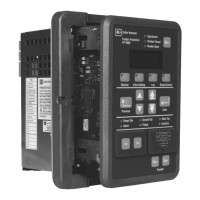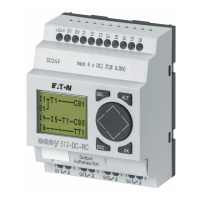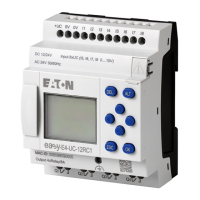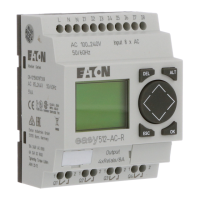Page 86 I.L. 17562
PR 0.3 Effective 8/99
The three other relays are designated as Alarm, Auxiliary 1, and Auxiliary 2. Normally, all alarm
and warning conditions are steered to the Alarm relay. However, the Alarm relay and the two
Auxiliary relays are all fully programmable. They can be set by the user to operate for a
designated list of internal MP-3000 measured or calculated conditions.
8.2.1 Direct Load-Based Protection The monitored level of actual motor current is used to
determine when the instantaneous overcurrent trip, jam trip, load shedding, underload trip,
transition trip, and load-shedding setpoints have been reached. Also, direct temperature
feedback from the stator, load bearing, motor bearing, and auxiliary RTDs are compared with
respective setpoints. If necessary, the relay gives alarm and/or trip outputs.
8.2.2 Thermal-Model and Rotor Temperature Protection Each motor has a specific
damage curve. Usually it is called the I
2
t (current squared multiplied by time) curve. With larger
horsepower motors, the thermal capability is usually rotor-limited, so it is important to track the
total heating of the rotor. In ac motors, the current balance between phases is of major concern
due to the additional rotor heating associated with the negative sequence component of an
unbalanced phase current condition. Current unbalance is usually caused by voltage unbalance,
the result of single-phase loads on a 3-phase system, and/or motor winding unbalance.
Any unbalanced set of three-phase currents or voltages can be mathematically transformed into
a linear combination of positive, negative, and zero sequence components. The measured
current phasor in each phase is the sum of the three sequence component phasors in that phase.
The zero-sequence component is a common-mode component which is equal in the three
phases, and requires a neutral or ground path for return. So, in a motor without a neutral return,
we see no zero-sequence current unless there is a ground fault. Thus we focus on the positive
and negative sequence components which can routinely be present.
For analysis and understanding, consider the motor to have two tandem virtual rotors as shown
in Figure 8.2. One is driven only by the positive-sequence current I
1
, which is symmetrical and
balanced. The other is driven only by counterrotating negative-sequence current I
2
, directly
related to unbalanced current; and produces a proportional torque in the reverse direction. If
perfect current balance and phase-angle symmetry exists among the three phases, then I
1
would
be the only component of line current squared, with no effect from the second rotor. This positive
sequence component of current produces the motor output torque and work.
The negative sequence current I
2
is a 3-phase current component with a reverse phase rotation
compared to that of the ac source. This current generates a reverse torque in the second rotor,
and works against the main action of the motor, doing negative work. Because the negative work
caused by I
2
stays within the rotor, it is completely absorbed as heat and therefore has a far
more significant effect on the rotor heating than the balanced l
1
.
Use phasor analysis to determine the sequence currents from physical phase current phasors.
Any 3 phase ac current without external ground or neutral return path can be represented by the
addition of I
1
and I
2
phasors in each phase. For an example, refer to the unbalanced motor
currents of Figure 8.3. In this case, the three phase currents in the motor are I
A
, I
B
, and I
C
. Note
that I
B
and I
C
are of about the same magnitude as I
A
, yet are noticeably displaced in phase
position. This is an example of a serious negative-sequence condition which is threatening to
the rotor, yet is not reflected in the current magnitudes alone.
To calculate the positive sequence component in phase A, rotate the phase B current phasor 120
degrees in the positive direction and the phase C phasor 240 degrees in the positive direction.
Refer to Figure 8.4. The formula for I
A1
is:
I
A1
= I
A
+ (I
B
∠120°) +( I
c
∠240°)
3
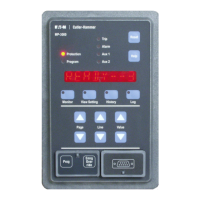
